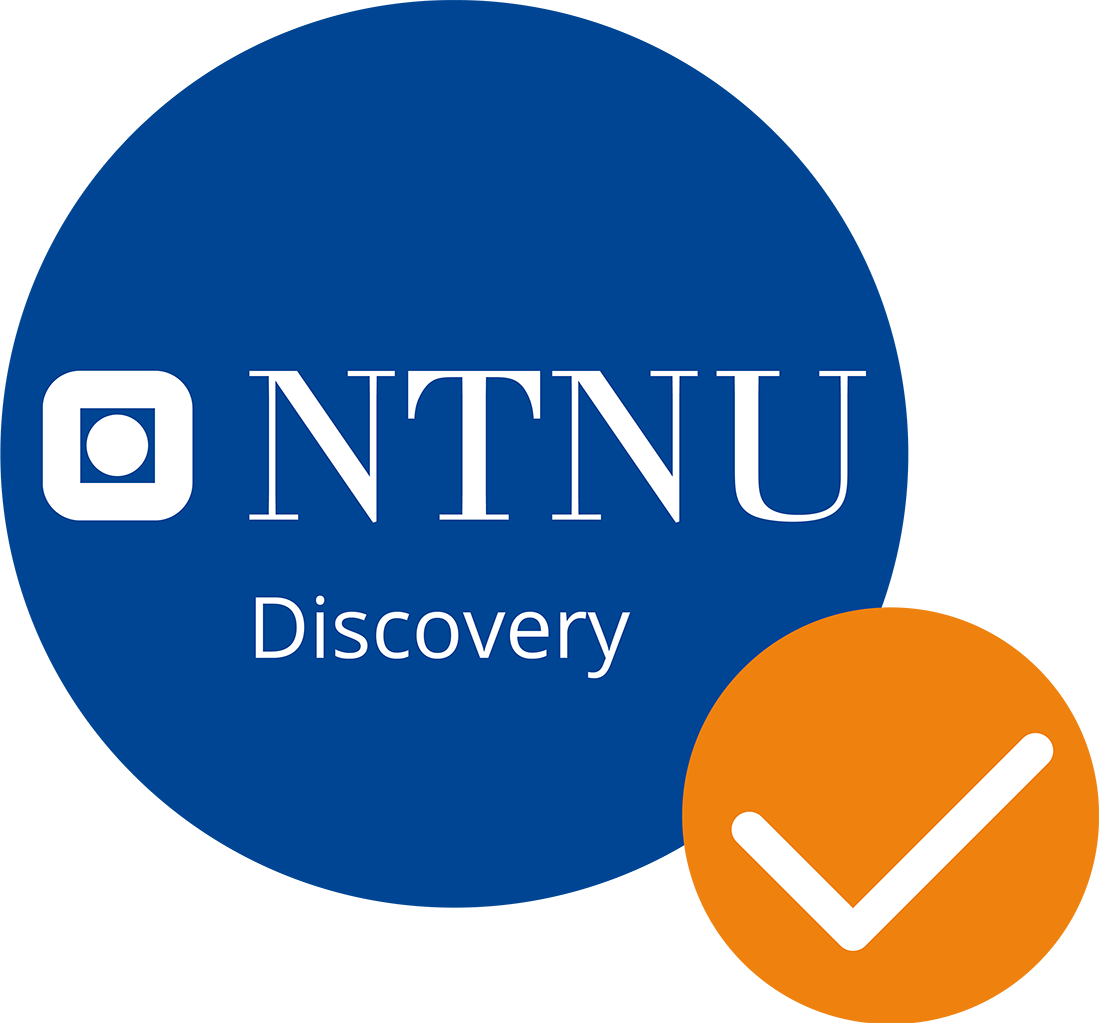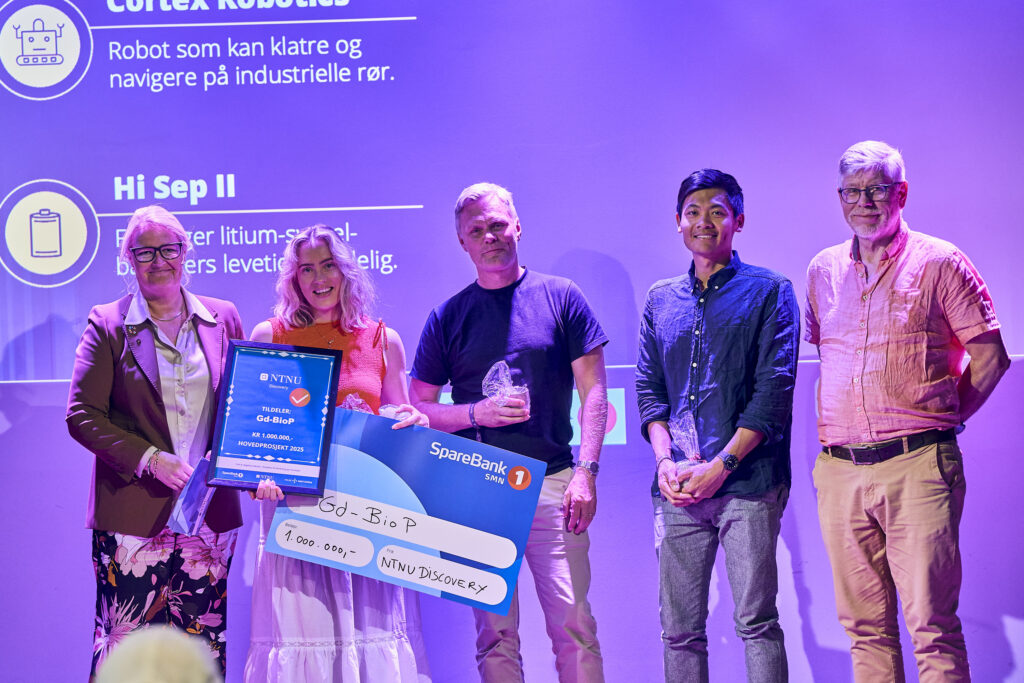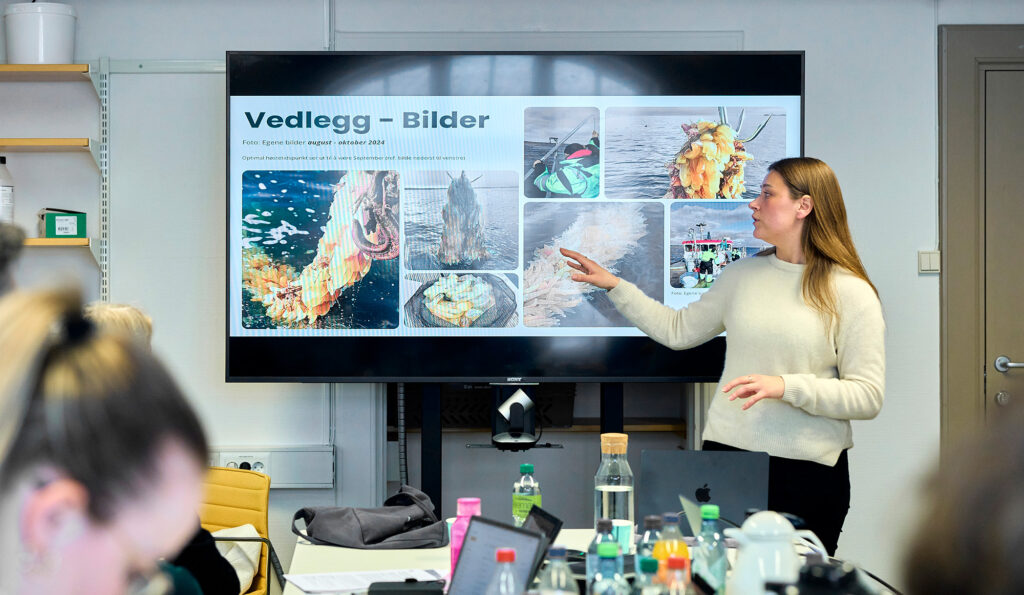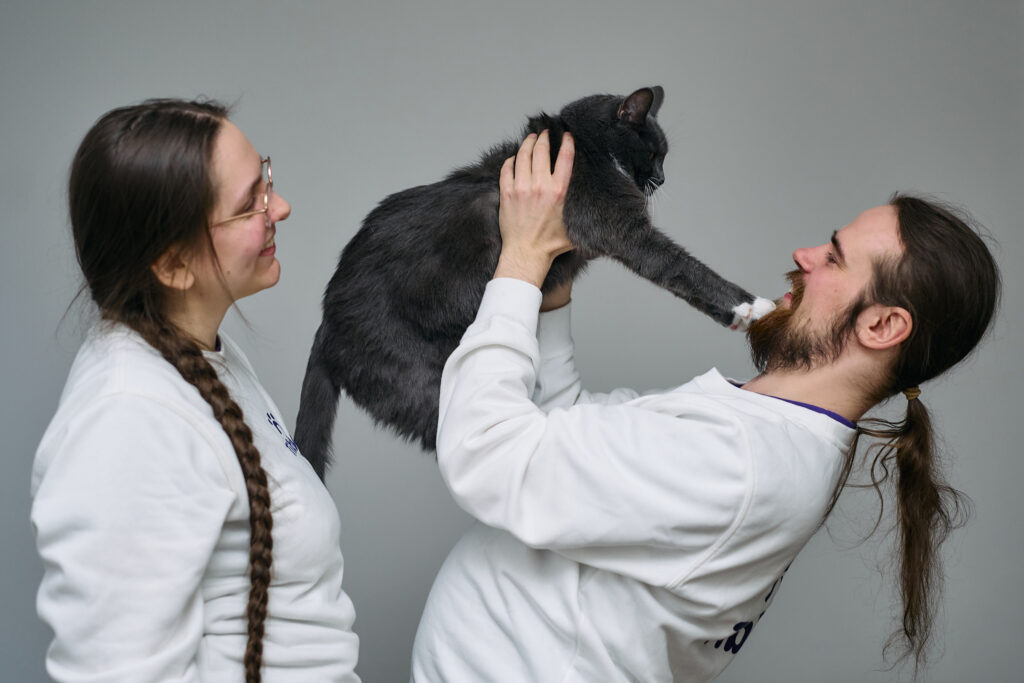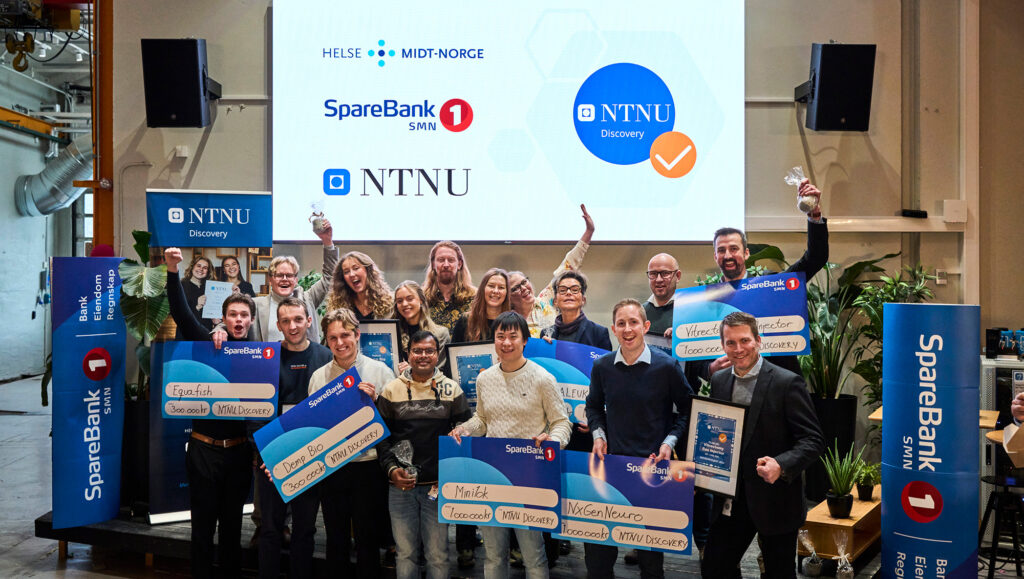Aiding ALS patients
Tekst: Anne-Lise Aakervik | Foto: synlig.no
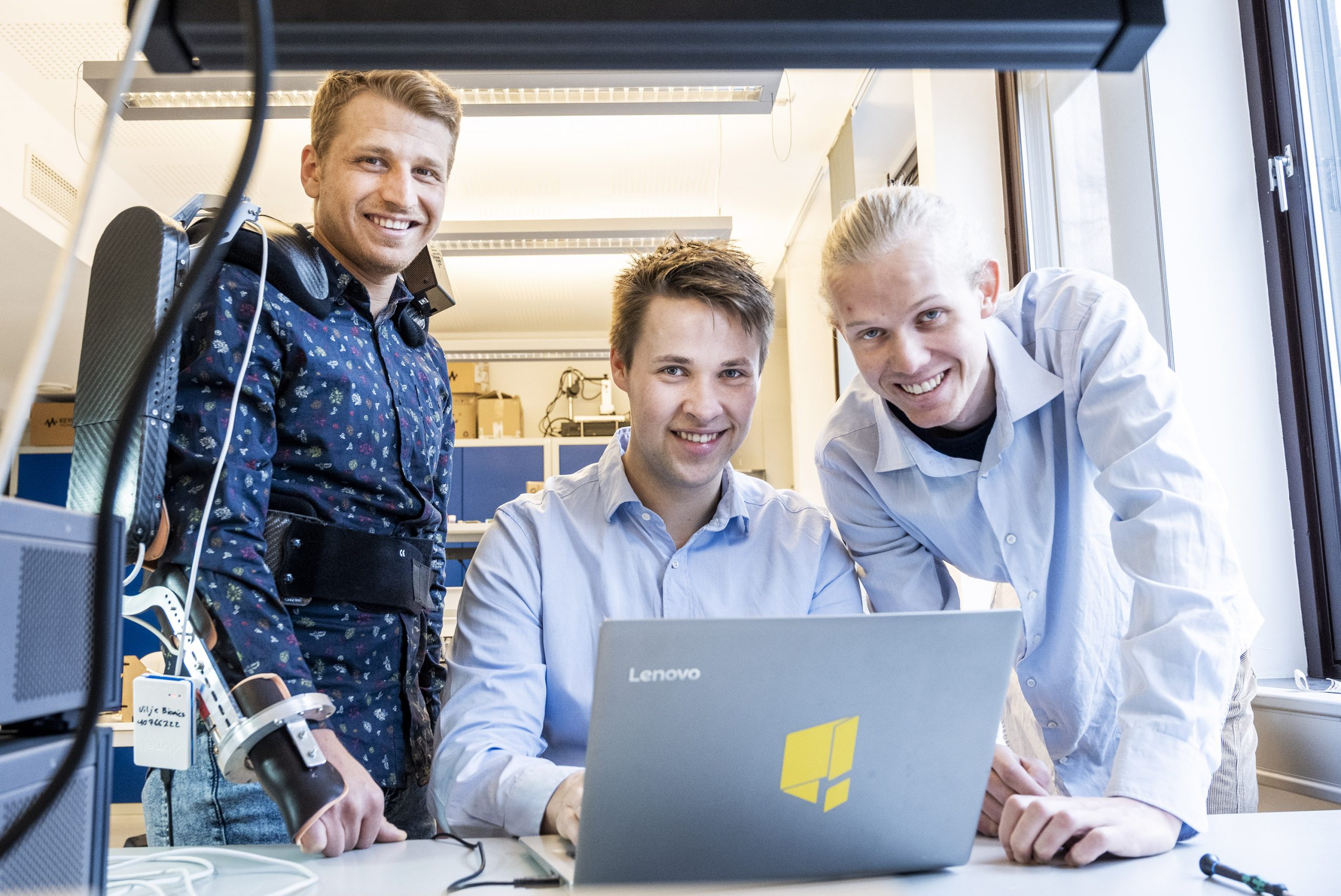
Meeting the ALS patients has been strong, says the trio. It has given them even more faith that MotOrtose can help give this patient group a better life.
On the table in front of us is a type of arm brace and something that looks like the back plate of a backpack. By putting the plate on their back and strapping the brace to their arm, the user can use voice commands to get the arm to perform simple, yet essential tasks, such as scratching their cheek.
The product is called MotOrtose and the team working on it consists of graduate students Saeid Hosseini, Asmund Kvam Kollbye and Eirik Bodsberg. Initially, they are working toward a voice-controlled model, similar to asking Google or Siri for assistance.
Their target group is ALS patients. This is a patient group with limited options in terms of assistive technology, and there is no treatment or cure for their disease.
Helping brother with ALS
It all started with Professor Terje Lien at NTNU. He developed an assistive aid for his brother, who is also an engineer and who has ALS. They recruited Associate Professor Tore Meisingset and others at St. Olavs Hospital/NTNU, and continued working on an idea for an early prototype.
In January 2020, the three graduate students were brought on board. They are currently writing their master’s theses on the project, while also working on further developing the product.
“How will the patients control the device?”
“Patients in this patient group are already quite familiar with voice commands. They also use eye movements for commands, or a straw they suck or blow air through. If they are able to move a finger, they will use a joystick. This is something we will have to take into account in developing our controls,” Erik explains. “To start with, it’s voice commands only.”
User involvement
In order to determine what this patient group would like to use this type of technology for, the team interviewed 13 persons who have ALS.
“What we think, is one thing. What they need may be something else entirely. All of our interviewees said being able to scratch an itch is among the things they missed the most. Other needs include picking up something they have dropped, like their glasses, or being able to push their glasses back up on their nose when they slide down. Painting, petting the dog and knitting also came up, but I think that last one is a bit beyond our reach still,” Asmund says.
From machine to healthcare
“What are some of the challenges you have come across so far?”
“Aside from corona virus restrictions, we all have backgrounds as mechanical engineers. We have never worked on developing an assistive aid before. The development of assistive technology is subject to strict requirements.” The trio received a grant from NTNU Discovery in the spring of 2020.
“The Discovery grant actually meant the world to us. It meant we were able to move forward with the development of our prototype.”
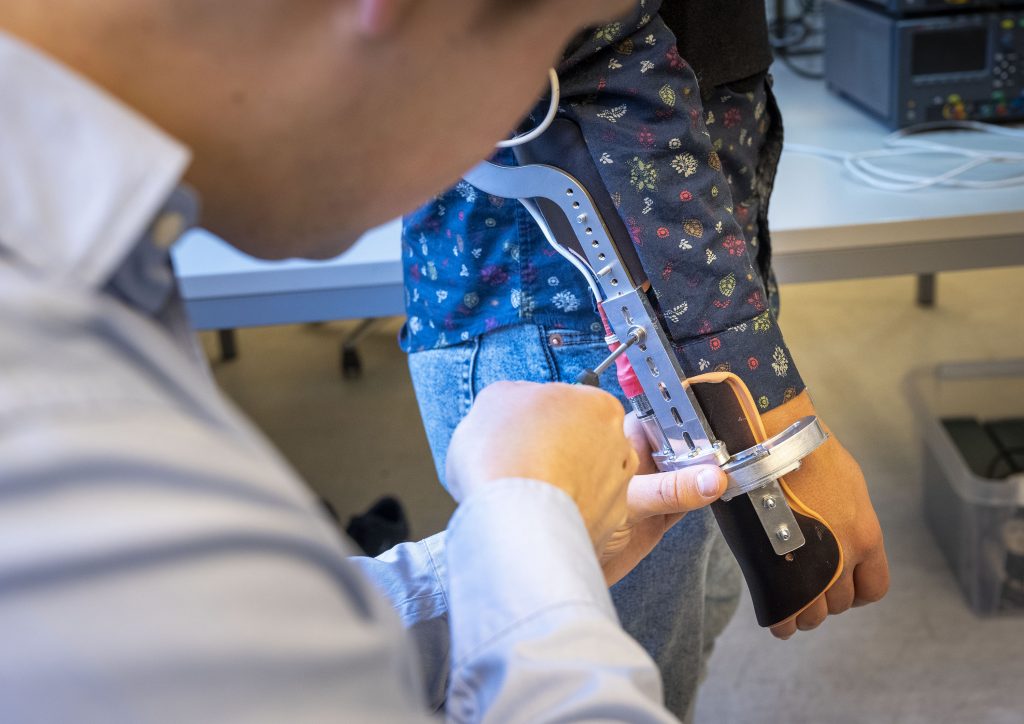
Ambitious goal
Going forward, the team is hoping to complete their system and get approval for testing on ALS patients.
Despite corona virus restrictions and delays. The team and their partners have founded Vilje Bionics, and their very ambitious goal is to introduce a CE-certified product in August 2022. There are quite a few milestones yet to reach before that time comes, though.
“But as long as we can secure funding or new grants or find sponsors, we’ll get there,” the trio says.
Prosjekter og nyheter
Kontakt:
Prosjektleder
Jan Hassel
Epost: jan.hassel@ntnu.no
Telefon: 906 53 180
Kontor: Hovedbygget, sokkel
Håvard Wibe
Epost: havard.wibe@ntnu.no
Telefon: 41 47 37 68
Kontor: Hovedbygget, sokkel
Personvernerklæring
